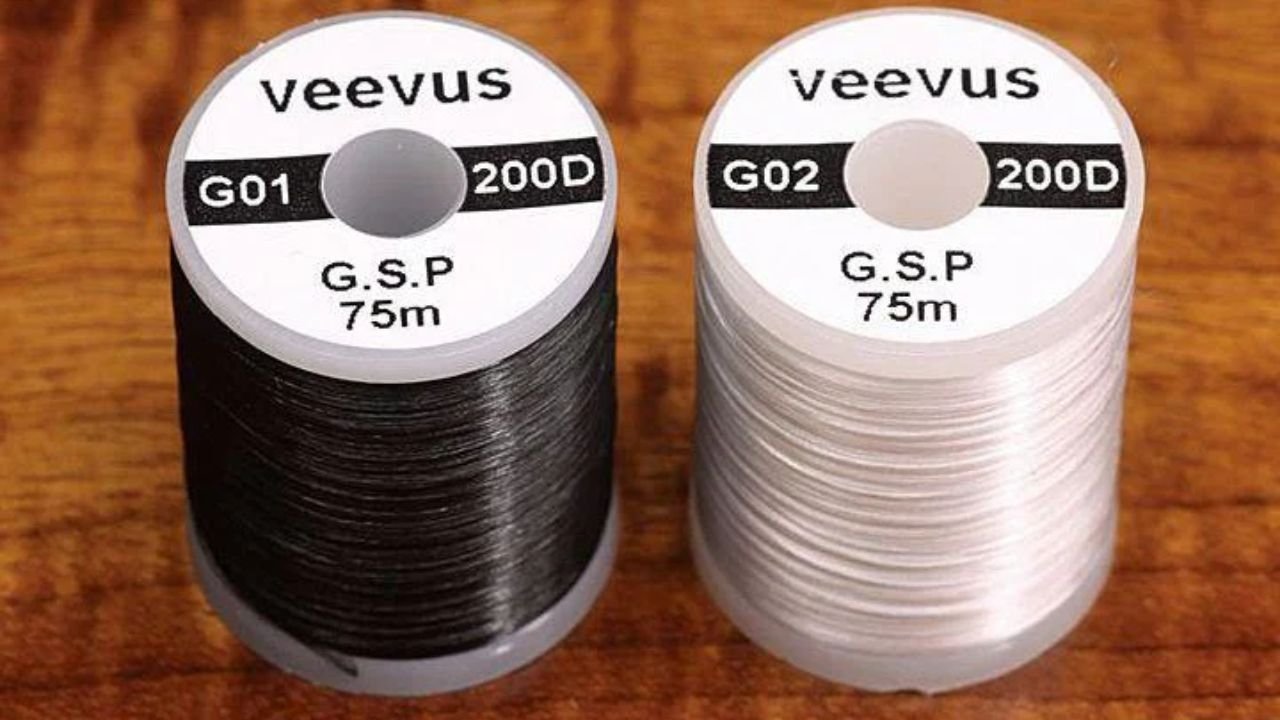Fly tying is a craft that blends artistry with technique, and choosing the right thread is a critical part of mastering this skill. For years, the debate veevus gsp thread vs regular thread thread has been central to fly-tying discussions. Each type of thread offers unique qualities that can significantly impact the ease, durability, and appearance of your flies.
In this detailed comparison, we will explore the defining features of Veevus GSP thread vs regular thread, analyze their strengths and weaknesses, and provide insights on when to use one over the other. Whether you’re a seasoned fly-tyer or a beginner, understanding these differences can elevate your fly-tying experience.
Understanding Veevus GSP Thread
The Veevus GSP (Gel Spun Polyethylene) thread has quickly become a favorite among fly-tyers due to its extraordinary strength, smoothness, and versatility.
What Makes Veevus GSP Thread Unique?
- Incredible Strength: One of the most defining characteristics of Veevus GSP thread is its strength-to-diameter ratio. Despite being ultra-thin, it can withstand immense tension, which allows you to tie tight, compact knots without worrying about breakage.
- Minimal Stretch: Another key feature is its minimal stretch. When tying delicate patterns, having control over your thread’s tension is crucial, and Veevus GSP ensures that every wrap stays firm and consistent.
- Smooth Texture: Veevus GSP thread is known for its silky, smooth finish, which allows it to glide easily over hook shanks and materials. This reduces the risk of snagging and helps you achieve a clean, polished look on your flies.
- Non-Bulking: The thin diameter of the thread means you can tie more detailed patterns without adding bulk, making it ideal for tying small flies and intricate details.
What Is Regular Thread for Fly Tying?
Before Veevus GSP thread gained popularity, fly-tyers mostly relied on regular threads, which are typically made from polyester, nylon, or similar materials. These threads come in a range of thicknesses and strengths and have been used for decades in the world of fly tying.
Characteristics of Regular Thread
- Variety of Materials: Regular fly-tying threads are commonly made from polyester or nylon, offering varying degrees of strength and flexibility. While polyester tends to be more durable, nylon provides greater elasticity, which some tiers prefer.
- Variety of Sizes: Unlike GSP threads, which are mostly known for their fine diameter, regular threads come in various thicknesses to suit different fly patterns and hook sizes.
- Ease of Use: Regular threads, especially polyester ones, are easier to handle and control for beginners, as they generally have a moderate level of stretch and won’t snap under moderate tension.
- Affordability: Regular threads tend to be more affordable compared to specialized GSP threads, making them a go-to choice for beginners or for tying larger flies that don’t require ultra-fine thread.
Strength Comparison: Veevus GSP Thread vs Regular Thread
When it comes to strength, Veevus GSP thread stands in a league of its own. Its unique composition of gel-spun polyethylene allows it to maintain exceptional strength even at thinner diameters. This means you can apply greater pressure to your fly without worrying about the thread snapping. Regular threads, while strong, cannot match the tensile strength of GSP threads.
Durability Matters
- Veevus GSP: Ideal for tying flies where strength is crucial, such as saltwater or predator patterns. Its toughness ensures that the flies can withstand aggressive strikes and repeated use.
- Regular Thread: Regular threads offer sufficient strength for most freshwater flies but may fall short when tying larger flies or for species that demand sturdier flies.
Application Differences: Which One to Use and When?
One of the most important factors in choosing between Veevus GSP thread and regular thread is the type of flies you plan to tie. Different fly patterns require different characteristics from the thread, such as strength, flexibility, and stretch.
Tying Large, Sturdy Flies
When tying larger, more durable flies, such as streamers, saltwater patterns, or predator flies, the strength and toughness of Veevus GSP thread make it the perfect choice. The minimal stretch and ability to create tight, compact wraps without breaking are key advantages.
Tying Small, Delicate Flies
For smaller flies like midges or emergers, both Veevus GSP and regular thread can work well. However, the ultra-fine diameter of Veevus GSP allows you to create precise details without adding bulk, while still maintaining strength. On the other hand, regular thread, especially in smaller sizes, can also provide a more traditional tying experience with more flexibility and stretch, which can be easier for beginners to manage.
Flexibility and Stretch: A Closer Look
Regular Thread: One of the main advantages of regular thread, particularly nylon thread, is its elasticity. This stretch allows for more give when pulling the thread tight, which is useful for tying softer materials or when you need to control tension delicately.
Veevus GSP Thread: While strong, GSP thread has very little to no stretch, which means you need to be more mindful of how much pressure you’re applying during the tying process. This lack of flexibility might make it harder to use for beginners, especially when learning to manage thread tension.
How Thread Diameter Impacts Fly Tying
The diameter of your thread can greatly influence the outcome of your fly. Thicker threads add bulk to the fly, while thinner threads allow for more delicate and precise patterns.
Fraying and Breakage: Minimizing the Risk
One of the most frustrating experiences in fly tying is when your thread frays or breaks during the process. This can ruin a carefully crafted fly and waste precious time.
Veevus GSP: Thanks to its gel-spun polyethylene composition, Veevus GSP thread is highly resistant to fraying and breaking, even when tying tight knots. This makes it a reliable option for challenging patterns or when using tougher materials like deer hair.
Regular Thread: While regular threads, particularly polyester ones, are fairly durable, they are more prone to fraying, especially if you’re tying with sharp or rough materials. Careful handling and the right technique can help minimize this risk, but it’s something to be mindful of when using traditional threads.
Cost Comparison: Is Veevus GSP Worth the Investment?
Fly-tying materials can vary greatly in price, and thread is no exception. Regular threads are generally more affordable, making them a budget-friendly choice, especially if you’re just starting out or tying flies in bulk. Veevus GSP, being a specialized product, comes with a higher price tag, but the investment might be worth it for those who tie frequently or need the extra strength and durability.
Tying with Veevus GSP Thread: Tips and Techniques
When working with Veevus GSP, it’s important to adjust your technique to account for the thread’s unique characteristics. Since it doesn’t stretch, controlling your tension is key. Start with light wraps and gradually increase pressure, ensuring that your knots are tight but not over-stressed.
Additionally, because Veevus GSP is so smooth and slick, some tiers find that it can slip out of place more easily than regular threads. To combat this, you may want to add a drop of cement or wax at critical points to help lock your wraps in place.
Conclusion
In the ongoing debate between Veevus GSP thread vs regular thread, the right choice ultimately depends on your specific fly-tying needs. For strength, minimal bulk, and durability, Veevus GSP thread is the superior option, especially for tying larger or more intricate flies. On the other hand, regular threads remain a versatile and budget-friendly choice, perfect for beginners or more traditional patterns.
FAQs
What is the main advantage of Veevus GSP thread over regular thread?
The main advantage of Veevus GSP thread is its incredible strength-to-diameter ratio. It allows fly-tyers to create tight, strong wraps without adding unnecessary bulk to the fly.
Is Veevus GSP thread suitable for beginners?
While beginners can use Veevus GSP thread, it requires more control over tension since it has very little stretch. Regular thread is generally easier for those just starting out due to its elasticity and forgiveness.
Can Veevus GSP thread be used for all types of flies?
However, for softer, more delicate patterns, regular thread might still be a better choice.
Why does regular thread fray more than GSP thread?
Regular thread, especially nylon or polyester, is more prone to fraying because of its fibers.
How do you prevent thread slippage when using Veevus GSP?
To prevent slippage, consider using thread wax or a small drop of fly tying cement to secure your wraps. Additionally, practicing your technique to control tension can help avoid slippage.
Is the cost of Veevus GSP thread justified?
For those who tie flies frequently or need strong, durable flies, the investment in Veevus GSP thread is worth it. However, for casual or beginner fly-tyers, regular thread might be a more cost-effective option.











